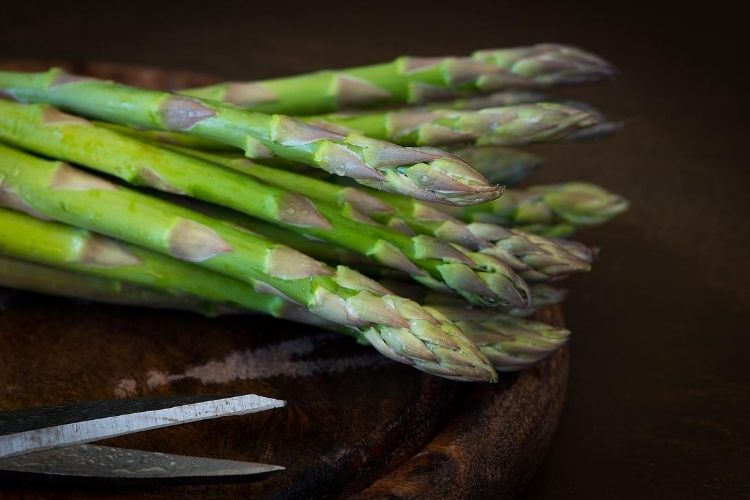
How to grow asparagus in the garden. How to keep the harvest
Asparagus is one of the most delicious, healthy and expensive vegetable crops. Asparagus is also one of the earliest vegetables of the new season: along with rhubarb, we start harvesting young asparagus shoots in April.
Asparagus (Asparagus officinalis) belongs to the asparagus family (previously it was referred to the lily family, but later the classification was changed). Asparagus grows throughout Europe, western Asia and northern Africa. Asparagus has been known to people since ancient times. Previously, asparagus was cultivated for medicinal purposes, as a diuretic and blood purifier. During the Renaissance, asparagus was declared an aphrodisiac and therefore banned from the use of monks (a fact that makes modern people smile).
Young tender asparagus shoots that have just emerged from the ground are used for food. As soon as the leaf buds on the shoot begin to bloom, the shoot becomes denser, tough and unsuitable for eating. In addition to outstanding useful and gastronomic properties, asparagus is an ornamental crop, which is used in floral arrangements (many are familiar with the delicate “Christmas trees” with orange berries in flower bouquets).
Asparagus is a perennial dioecious plant that can be easily grown in the garden, but it takes a lot of space to successfully cultivate it. Plants that have reached their peak fruiting yield about 9-12 shoots per season (enough to make just 2 servings of vegetable side dish!). Such a modest yield and a short shelf life, when large areas are required and manual harvesting, explains the high cost of asparagus compared to other vegetables.
Modern asparagus varieties are mostly male open-pollinated first-generation hybrids – they are more productive, do not produce seeds and do not self-seeding. The shoots of the male asparagus plants are thicker and stronger and the female ones are thinner, although the female plants produce more of them. When choosing asparagus varieties for a private garden, give preference to high-yielding, frost-resistant and disease-resistant modern hybrids: Jersey Giant, Jersey Knight, Jersey Prince, Syn 53, Syn 4-362, UC 157, Viking KBC. If you want to see berries at the end of summer on a female asparagus plant, then plant at least one next to the male ones, and … get ready to fight massive self-seeding.
Growing asparagus
For planting asparagus, choose a calm and sunny spot somewhere at the back of your garden. Asparagus can live in the garden for up to 20-25 years without the need for transplants. Prepare pits measuring 30 by 30 cm, which should be filled with a mixture of rotted manure, garden compost, and soil.
You can sow asparagus with seeds in early spring, but you can get a faster harvest from a young plant or the root of a plant purchased from a garden center. Plants are planted at a distance of 40-45 cm from each other. Caring for asparagus is quite simple: manual weeding, fertilizing plants before (early spring) and after fruiting with well-rotted manure or mineral fertilizers, as well as autumn mulching with a thick layer of natural materials (leaf humus, wood chips, crushed bark, etc.). Before mulching, the yellowed asparagus is cut to the root.
You can harvest the first crop of shoots from asparagus that has reached 3 years old. Shoots are cut, 15-20 cm long from the ground, within 4-6 weeks from the beginning of fruiting. Asparagus can be harvested from older plants within 8-10 weeks. For harvesting, use a special asparagus knife that can easily cut offshoots 2 cm below the ground, or simply break them off with your hands near the ground.
Storing and preserving asparagus
The harvested asparagus is best consumed immediately, as storage degrades the nutritional quality of the vegetable. To preserve the asparagus crop for several days, treat the shoots as if they were fresh flowers: refresh the cuts and place them in a glass of water. The water should cover the base of the shoots by a couple of centimeters. Cover the glass with plastic wrap and store in the lower compartment of the refrigerator.
Canned asparagus loses significantly in nutritional value, appearance, and most importantly – in its amazing taste. The most gentle method of preserving asparagus is quick freezing. Pour boiling water over washed shoots with fresh cuts for 3 minutes, then discard the asparagus in a colander and pour over with cold water to stop the cooking process. Drain the water, wrap the shoots in freezer bags and remove the air from them. Sign the asparagus bags and place in the freezer.